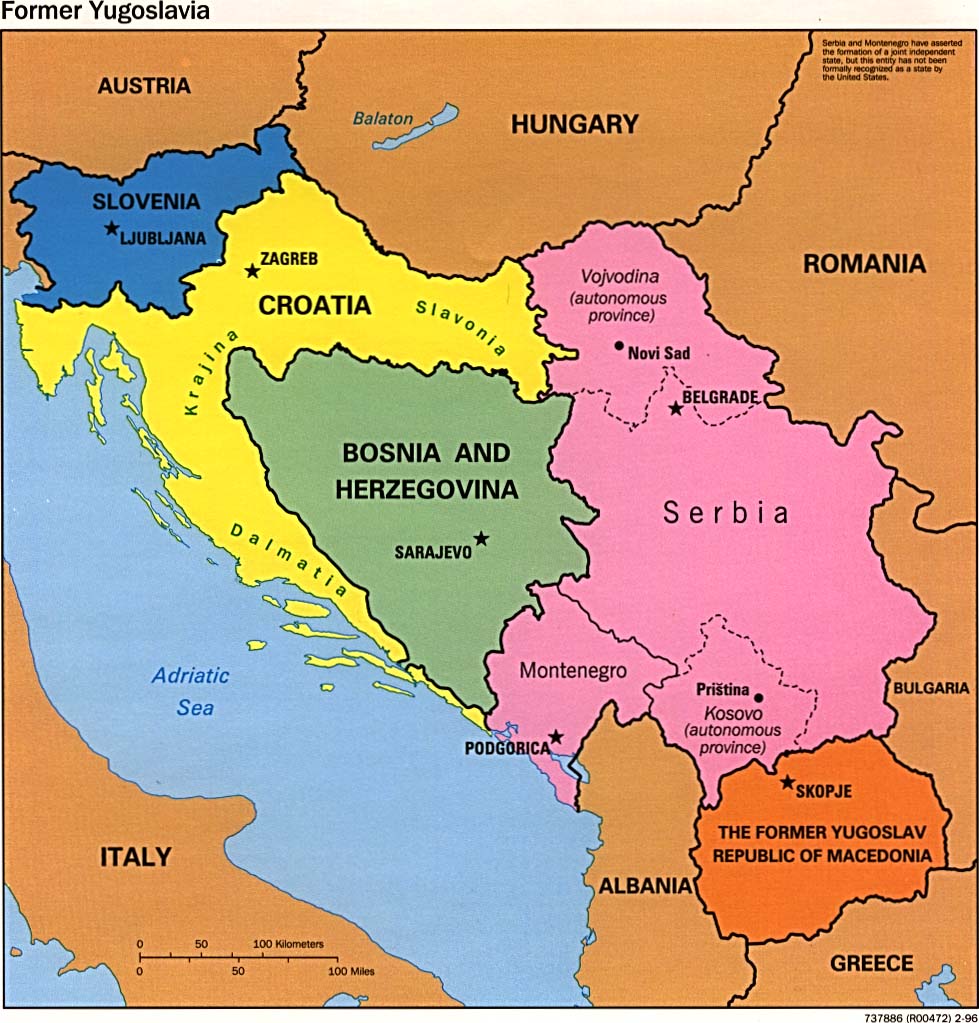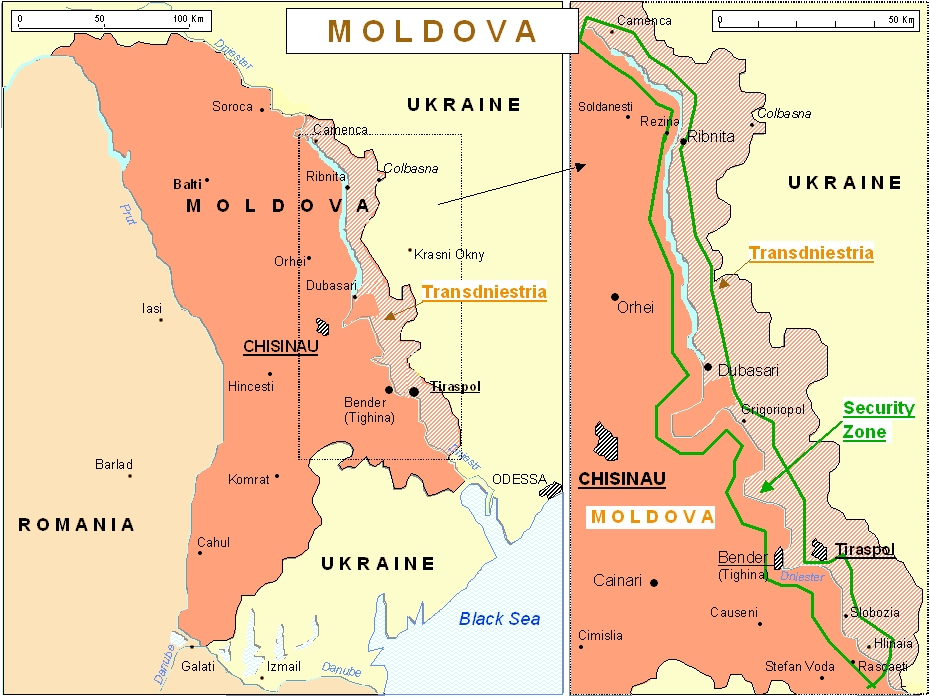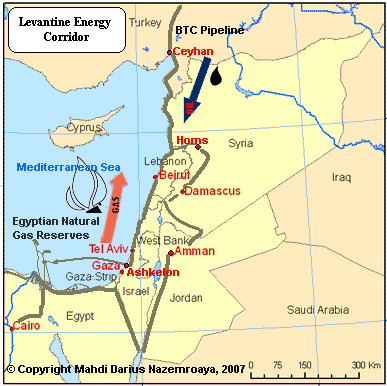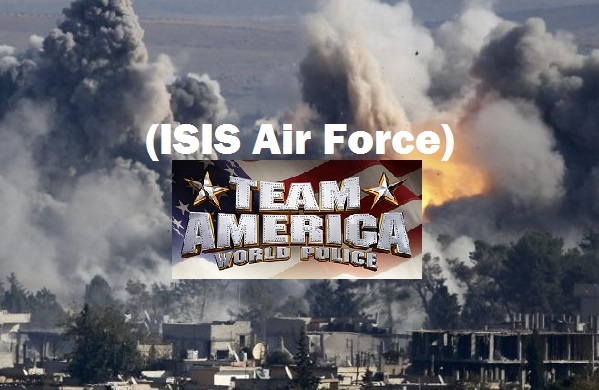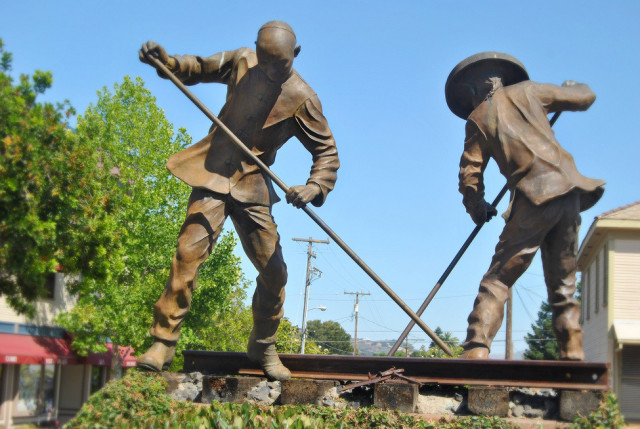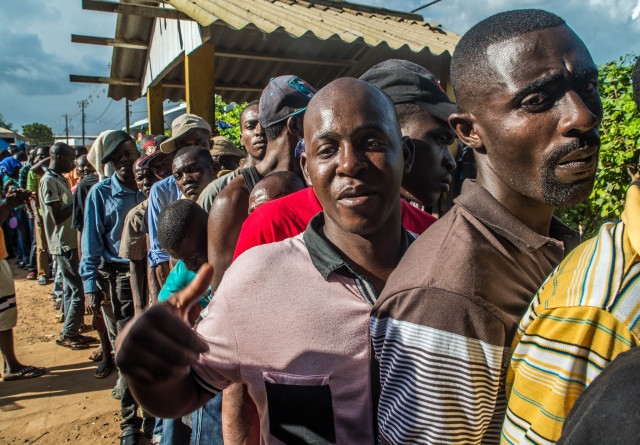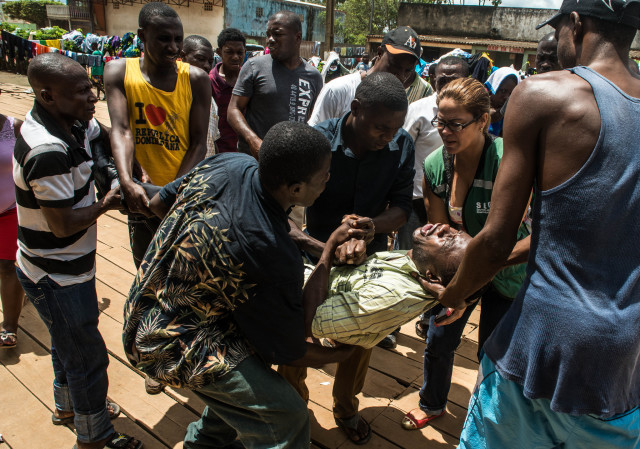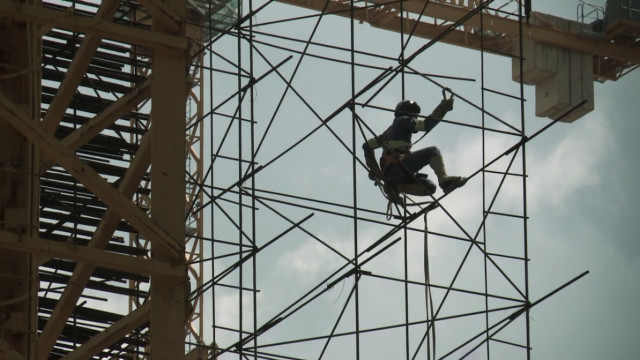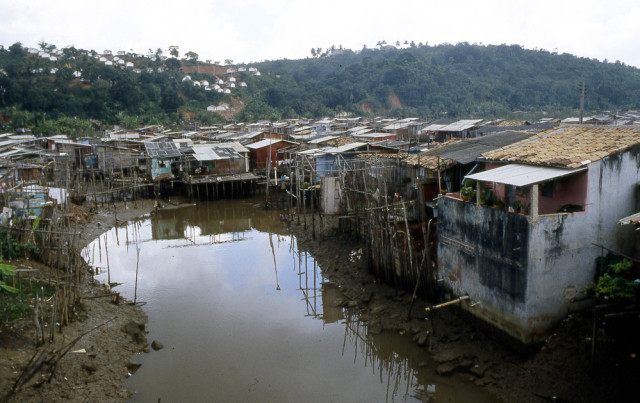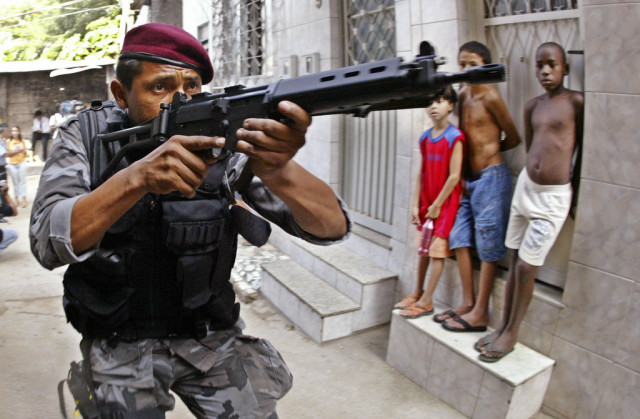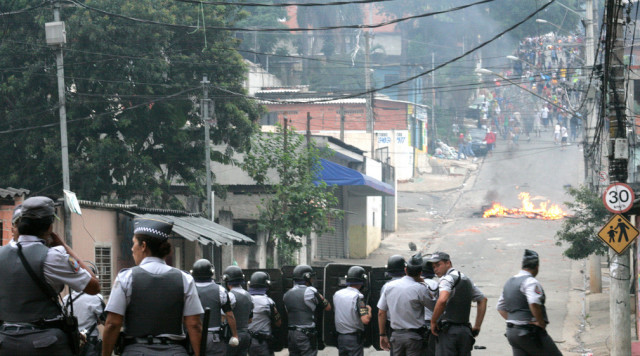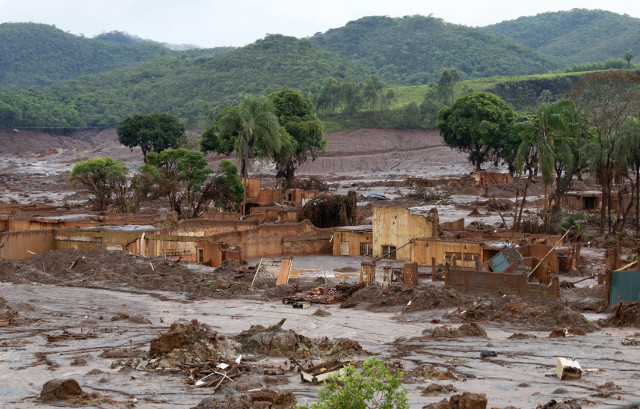US-Japan Military Alliance: Japan’s Maritime Self-Defense Forces (JMSDF). The Most Powerful Naval Force in the Asia-Pacific Region
December 22nd, 2015 by South Front
The Japanese Maritime Self Defense Force (JMSDF) of today has matured a great deal since the warships of the Imperial Japanese Navy were parceled out amongst the victors, scrapped or sunk at the end of World War II. Long decades of pacifist defense policy coupled with non-interventionist foreign policy helped maintain peace in a quite hostile neck of the woods. Imperial Japan wrought destruction, brutal occupation and various crimes against humanity upon many of its neighbors prior to and during the war. This legacy has not been forgotten.
The security agreement between Japan and the United States has changed greatly under the Shinzo Abe and Barak Obama administrations, with Japan being seen as a peer in the overall, shared defensive strategy of the two nations in the region. Japan has been called upon to increasingly modernize its fleet, fully integrate its communications, fire control and tracking systems, and weapons systems with those of the U.S. Navy. Prime Minister Abe has altered the defense posture of the island nation, to the chagrin of a majority of its citizens, to allow for the offensive deployment of the JDF in various U.S.-led “Multinational” enterprises.
These developments have not escaped the notice of Japan’s neighbors, most notably China. Japan’s modernization of its fleet and the increase in the potency of both defensive and offensive platforms has largely occurred in response to a modernizing and more capable Chinese naval presence in the region. The further integration of the Japanese and the U.S. naval forces, the total compatibility of their systems, and their joint strategic planning are forcing China to recalculate and fine-tune their more assertive foreign policy in both the South China Sea and East China Sea.
Brief Overview:
The Imperial Japanese Navy of World War II was one of the most powerful navies in modern history. Japan had a surface fleet of battleships, heavy cruisers, cruisers and destroyers that was on par or superior to any navy of the era. Her naval aviation arm was far more advanced than any other nation at the time, with only the United States being able to rival her to any degree of parity.
With the defeat of Imperial Japan at the conclusion of World War II, Japan was forced to surrender unconditionally, and forfeit what remained of the Imperial Navy. Many powerful assets remained and were either divided amongst the victors or scrapped. After all repatriation of Japanese military forces had been completed, all vessel of destroyer tonnage or below were divided up amongst the U.S.S.R, China, the UK and the U.S. Vessels above this tonnage were either scrapped or sunk in deep ocean waters. An empire with a long and proud naval history was rendered impotent.
A great deal has changed since the end of World War II, the implementation of the Potsdam Declaration, and the acceptance of Article 9 of the Constitution of Japan in 1947. The acceptance of Article 9 presaged the age of official Japanese pacifism, or more accurately an era of a posture of non-interventionist self-defense. It is a credit to the people of Japan, regardless of their brutal militarism of the mid-twentieth century that this state of affairs has lasted as long as it has.
Japan has maintained a Japanese Maritime Self Defense Force of very capable organization and function over at least the past five decades; however, the updated security agreement between Japan and the United States that has come into being under the Obama administration holds Japan to be a peer with the United States in establishing a viable offensive and defensive naval, aviation and Anti-Ballistic Missile (ABM) capability in providing for the defense of Japan as well as the overall naval strategy of the United States in the Pacific.
A resurgent Chinese power in the region has lead the Japanese government to reevaluate its pacifist Constitution, realign itself with past foes and take a much more robust defensive posture. The Peoples Liberation Army Navy has been modernizing at a rapid rate and China has more assertively staked its claim to a number of disputed areas both in the South China and East China Seas. The Japanese government moved to solidify its legal claim to the Senkaku (Daioyu) Islands, by buying three of them from the private Japanese owner in the Spring of 2012. This only further enflamed the situation and both powers have been sending Coast Guard vessels and aircraft to the islands in an ever increasing rattling of sabers. China responded by establishing a new air-defense identification zone over the islands in 2013.
Further, Japan carried out naval drills with the United States in the South China Sea for the first time in the summer of 2015. This was a show of solidarity and cooperation with the U.S. at a time when the U.S. has been mounting sorties with warships and military aircraft within twelve miles of the artificial islands that China has constructed in the Spratly Islands. Japan has also pledged to donate older patrol boats to the Philippine Navy in an attempt to bolster that nations rival claims in the region. The “South China Sea Crisis” will continue to evolve in complexity as the man-made islands become operational and China challenges the centuries old established precedents of international maritime law.
Current Organization and Deployment
The JMSDF is commanded by the Maritime Chief of Staff. The Self Defense Fleet consists of the following components:
- Fleet Escort Force
- Escort Flotilla 1 (Yokosuka)
- Escort Squadron 1
- Escort Squadron 5
- Escort Flotilla 2 (Sasebo)
- Escort Squadron 2
- Escort Squadron 6
- Escort Flotilla 3 (Maizuru)
- Escort Squadron 3
- Escort Squadron 7
- Escort Flotilla 4 (Kure)
- Escort Squadron 4
- Escort Squadron 8
- Fleet Training Command
- 1st Replenishment Squadron
- 1st Transportation Squadron
- Escort Flotilla 1 (Yokosuka)
- Fleet Air Force
- Fleet Air Wing 1 (Fixed wing patrol aircraft and Helicopters)
- Fleet Air Wing 2 (Fixed wing patrol aircraft and Helicopters)
- Fleet Air Wing 4 (Fixed wing patrol aircraft and Helicopters)
- Fleet Air Wing 5 (Fixed wing patrol aircraft and Helicopters)
- Fleet Air Wing 21 (Helicopters)
- Fleet Air Wing 22 (Helicopters)
- Fleet Air Wing 31 (Fixed wing patrol, ASW, intelligence, liason and support aircraft)
- Fleet Squadron 51 (Fixed wing patrol aircraft and Helicopters)
- Fleet Squadron 6 (Fixed wing transport aircraft)
- Fleet Squadron 1 ( Medium and Heavy Lift Helicopters)
- Fleet Submarine Force
- Submarine Flotilla 1
- Submarine Squadron 1
- Submarine Squadron 3
- Submarine Squadron 5
- Submarine Flotilla 2
- Submarine Squadron 2
- Submarine Squadron 4
- Submarine Training Command
- Submarine Flotilla 1
- Mine Warfare Force
- Fleet Research & Development Command
- Fleet Intelligence Command
- Oceanographic Command
- Air Training Command
- Shimofusa Air Training Group
- Tokushima Air Training Group
- Ozuki Air Training Group
- Maritime Material Command
- Vessel and Aviation Supply Depots
- Training units and schools
- Communications command
JMSDF Districts
The JMSDF is responsible for guarding the waters of five military districts. Each district has a regional escort fleet element and shore-side support element or major naval base. Regional escort fleets are comprised of Destroyer Escorts (DDE), patrol craft, minesweepers and ancillary craft. Four of the districts are Home Port for the four Escort Fleet Flotillas. Each flotilla is comprised of one Helicopter Destroyer (DDH) as the command platform, and 7 DDGs/AWDs in escort.

Fleet Vessels
The JMSDF is comprised of over 130 combatant, mine countermeasures, support, training and ancillary vessels as follows:
- Helicopter Destroyers (DDH): 4 (One vessel to be replaced in 2016)
- Landing Ship Tank (LST): 3
- Guided Missile Destroyers (DDG): 12
- Destroyers (DD): 25
- Destroyer Escorts (DE): 6
- Minesweepers (MS): 27
- Patrol Boats (PB): 6
- Attack Submarines Diesel Electric (SSK): 17 (with 5 more planned)
- Replenishment Ships: 5
Most Powerful Vessels
The four Escort Fleet Flotillas of the JMSDF are comprised each of one DDH acting as a command ship and 7 DDGs/DDs. The DDH vessels of the JMSDF are very modern and flexible Anti-Submarine (ASW) and power projection vessels. As a nation comprising of over 6,852 islands, with most of the landmass constituting the 4 main islands, rapidly deployable naval and amphibious forces are essential to defense strategy. Each Escort Fleet Flotilla has the power to defend one of the 5 naval districts from attack from guided missiles, aircraft, surface vessels and submarines, and have the inherent ability to land troops via helicopter, landing craft or hovercraft.
Izumo Class DDA
While carrying the designation of Helicopter Destroyer, many military analysts have studied the design of the JS Izumo DDH-183 and surmised that she is very capable of carrying a number of VSTOL aircraft in addition to her compliment of ASW/MCM and troop carrying helicopters or tilt-rotor aircraft such as the V-22 Osprey. As Japan is slated to take delivery of the F-35A from the US, if and when this aircraft ever becomes operational in light of its many development setbacks and problems, it is not a stretch to imagine Japan taking delivery of the F-35B VSTOL version for future use on the JS Izumo and her soon to be completed sister vessel JS Kaga DDH-184. The JS Izumo was commissioned in late March of 2015 and is soon to be followed by the JS Kaga in Late March of 2017.
Izumo Class vessels in service:
- JS Izumo DDH-183
Specifications:
Displacement (Loaded): 27,000 tons
L.O.A.: 248 meters (814 ft.)
Beam: 38 meters (185 ft.)
Draft: 7.5 meters (25 ft.)
Deck Area: Approx. 8,000sq. meters
Speed: 30+ knots
Range: Not disclosed
Complement: 370 crew and 400 troop landing force
Weapons Systems: 2 x Phalanx CWIS, 2 x SeaRAM CWIS
Aircraft: 7 to 28 ASW/MCM or troop carrying helicopters. Can accommodate medium or heavy helicopters.

It is notable that the Izumo Class DDHs do not have a well deck and thus do not have the capability of delivering troops and equipment in an amphibious fashion. They were designed to provide a long range ASW/MCM capability, command and control and limited air assault and HADR capability. With a large internal hangar deck, and a large aircraft elevator, the vessels are more than capable of carrying a sizeable number of F-35B VSTOL aircraft if this were to be so desired at some future date. This number would most likely not exceed 10 to 12 fixed wing VSTOL aircraft due to the amount of space required for fuel, maintenance and armaments. Accommodation of the aircrews and maintenance crews for the aircraft would be possible if substituted for that originally designed for the air assault troops.
Hyuga Class, Helicopter Destroyers DDH
The Hyuga Class vessels’ keels were laid and they were commissioned between 2006 and 2011. JS Hyuga DDH-181, and JS Ise DDH-182 are extremely capable, long range ASW/MCM platforms. In many ways they can be seen as smaller versions on the Izumo Class, but with a number of differences.
The Hyuga Class DDHs are beautiful examples of a modern ASW warship designed to achieve localized naval dominance in the seaways of Japan, denying any enemy submarine force from threatening maritime or naval traffic within the territorial waters of Japan. When coupled with the advanced DDGs and DDs of the JMSDF with their anti-missile and anti-aircraft capabilities and added ASW/MCM capabilities, an Escort Fleet Flotilla is able to control and deny access to the territorial waters of Japan.
Like the larger Izumo class, these vessels lack a well deck and do not have the capacity to launch amphibious forces via landing craft or amphibious vehicles. The JS Hyuga and the JS Ise have already demonstrated their usefulness in HADR operations, with both vessels having participated in humanitarian support and evacuation operations in response to the 2011 Tohoku earthquake and tsunami (JS Hyuga and Ise) and the 2013 typhoon Haiyan which struck the Philippines (JS Ise).
Hyuga Class vessels in service:
- JS Hyuga DDH-181
- JS Ise DDH-182
Specifications:
Displacement (Loaded): 19,000 tons
L.O.A.: 197 meters (646 ft.)
Beam: 33 meters (108 ft.)
Draft: 7 meters (23 f.)
Deck Area: Approx. 6,500sq. meters
Speed: 30+ knots
Range: Not disclosed.
Complement: 360 – 371 crew
Weapons Systems: 2 x Phalanx CWIS, 16 cell Mk1 VLS (16 Sea Sparrow, 12 RUM-139 VL ASROC),
2 x triple 324mm torpedo tubes, 12.7mm machine guns
Aircraft: 4 to 18 ASW/MCM or troop carrying helicopters. Can accommodate medium or heavy helicopters.
Landing Ship Tank (LST)
The JMSDF has three Osumi Class LSTs; however, their design is more appropriately described as a Dock Landing Ship (LSD), as they have no bow doors and ramp for forward beaching of the vessel to discharge amphibious forces. This is facilitated by a well deck and stern door where a complement of 2 LCAC hovercraft are launched. The vessels have a complement of 330 troops for amphibious of helicopter landing, but sufficient space is available for up to 1,000 troops in an emergency situation or for a short duration. The vessels have sufficient space for 10 x Type 10 MBTs. The vessels carry a complement of 8 helicopters and carry 2 x 20mm Phalanx CWIS for close in air defense. Money has been allocated to research the refitting of all the vessels of the Osumi Class to field V-22 Osprey tilt-rotor aircraft instead of traditional helicopters, as well AAV7s for amphibious troops transport.
Osumi Class vessels in service:
- JS Osumi LST 4001
- JS Shimokita LST 4002
- JS Kunisaki LST 4003
Guided Missile Destroyers
The JMSDF operates three different classes of DDG, from the Hatakaze Class of the 1980s, to the most recently commissioned Atago Class. All of these vessel are very capable warships and are joined in their duties by smaller yet equally capable DDs. The Atago Class DDGS are easily one of the most powerful surface warfare platforms in the world.
Atago Class DDG
There are currently two commissioned Atago class DDGs in the JMSDF. These vessels are often seen as larger and more capable versions of the 4 Kongo Class DDGs that immediately preceded them into active service. The Atago’s chief advances over the Kongo are the greater guided missile capacity of the larger vessels, the larger bridge (command and control center of the vessel) and the full aft hanger that can accommodate one SH-60K helicopter. This makes the vessels more flexible and capable of a variety of duties, and give them a longer range ASW capability.
Most importantly, the two Atago Class vessels have been updated with the most recent AEGIS software as well as the capability of carrying the SM-3 Block 1A Standard missile. The SM-3 coupled with the AEGIS BMD 3.0 upgrades makes the Atago a more powerful Ballistic Missile Defense (BMD) platform. It is theorized that just two such vessels will be able to fully cover the Japanese home islands from ballistic missile threats. With 6 DDGs in the JMSDF equipped in such a fashion (2 Atago, 4 Kongo), 2 vessels would be constantly deployed while 2 could be in port or conducting training while a further 2 could be in dry-dock for maintenance. It has also been suggested that Japan may look to build two additional Atago Class vessels; however, in light of Japan’s poor economic outlook the funds for such an acquisition are in question.
Atago Class vessels in service:
- JS Atago DDG-177
- JS Ashigara DDG-178
Specifications:
Displacement: 10,000 tons full load
L.O.A.: 165 meters (541 ft.)
Beam: 21 meters (68.9 ft.)
Draft: 6.2 meters (20.3 ft.)
Speed: 30+ knots
Complement: 300 crew
Sensors/Processing Systems: AN/SPY-1D(V) passive electronically scanned phased array radar. AEGIS.
Weapons Systems:
- 96 cell MK-41 VLS (64 cells forward, 32 aft) equipped with SM2-MR or SM-3 ABM and RUM-139 ASROC.
- 2 x missile canisters for 8 Type 90 (SSM-1B) missiles.
- 2 x Type 68 triple torpedo tubes (Mk 46 or Type 93 torpedoes)
- 2 x 20mm Phalanx CWIS
- 1 x 127mm (5 in.) Mk 45 Mod 4 deck gun
Aircraft: Hangar for 1 x SH-60K helicopter assigned.
Kongo Class DDG
The four Kongo Class DDGs were commissioned by Japan between the years 1993 – 1998. They are very similar in design and function to the U.S. Navy Arleigh Burke Class DDGs, with the added requirement of being capable of acting as fleet command vessels. It had originally been planned to build six of these vessels; however, the decision was made to opt for the Atago design after the first four vessels had been completed. It is surmised that this was the result of an added BMD threat from North Korea and the fielding of the advanced Type 052D DDGs by the Chinese PLAN. The Atago is a more capable vessel than the Chinese Type 052D in terms of sensors and processing systems; however the Chinese vessels (3 in class) have a larger offensive missile capability.
The Kongo has been fitted with the later AEGIS systems and BMD 3.0 software coupled with the SM-3 Block 1A missile. Kongo class vessels have fired the SM-3 in successful anti-ballistic missile tests starting in 2007. The four Kongo Class DDGs will serve with the two Atago Class DDGs to make up the naval component of the Japanese BMD system.
Kongo Class vessels in service:
- JS Kongo DDG-173
- JS Kirishima DDG-174
- JS Myoko DDG-175
- JS Chokai DDG-176
Specifications:
Displacement: 9,500 tons fully loaded.
L.O.A.: 161 meters (528.2 ft.)
Beam: 21 meters (68.9 ft.)
Draft: 6.2 meters (20.3 ft.)
Speed: 30+ knots
Range: 5,200 nautical mi.
Complement: 300 crew
Sensors/Processing Systems: AN/SPY-1D(V) passive electronically scanned phased array radar. AEGIS.
Weapons Systems:
- 90 cell MK-41 VLS (29 cells forward, 61 aft) equipped with SM2-MR or SM-3 ABM and RUM-139 ASROC.
- RGM-84 Harpoon SSM or Type 90 SSM
- 2 x Type 68 triple torpedo tubes (Mk 46 or Type 93 torpedoes)
- 2 x 20mm Phalanx CWIS
- 1 x 127mm (5 in.) Oto-Breda compact deck gun.
Aircraft: Deck landing area for 1 x SH60K helicopter.
Destroyers (DD)
The JMSDF fields a wide range of destroyers. The most advanced of these small warships are the new Akizuki Class. The Akizuki Class DDs are the newest commissioned vessels of the Japanese navy. Weighing in at 6,800 tons fully loaded, they are 2,700 tons lighter than the Kongo Class DDGs; however, they are meant to escort these vessels and the DDHs of an Escort Fleet Flotilla and protect them from aerial and submarine threats.
Considering their small displacement, these vessels are bristling with weaponry and the most advanced indigenous sensor package available in the ATECS (Advanced Technology Command System) battle management system. Often referred to as the Japanese AEGIS, ATECS is fully compatible with the U.S. system and its weapons components. These DDs are also equipped with an advanced AAW system as well as the OQQ-22 ASW system. The vessel makes use of a stealthy upper hull/conning tower design. There is an aft hangar on the vessel as well as a landing area, which allows for the assignment of an SH-60K helicopter full time as well as the ability to operate two helicopters if the need arises.
Akizuki Class vessels in service:
- JS Akizuki DD-115
- JS Teruzuki DD-116
- JS Suzutsuki DD-117
- JS Fuyuzuki DD-118

Specifications:
Displacement: 6,800 tons fully loaded.
L.O.A.: 150.5 meters (493.7 ft.)
Beam: 18.3 meters (60 ft.)
Draft: 5.3 meters (17.4 ft.)
Speed: 30+ knots
Complement: 200 crew
Sensors/Processing Systems: ATECS Advanced Technology Command System
Weapons Systems:
- 32 cell MK-41 VLS equipped with RIMM-162 ESSM (SAM), RUM-139 ASROC or Type 07 ASROC.
- 8 Type 90 SSMs
- 2 x HOS 303 triple torpedo tubes (Mk 46 or Type 93 torpedoes)
- 2 x 20mm Phalanx Block 1B CWIS
- 1 x 127mm (5 in.) deck gun
Aircraft: Hangar for 1 x SH-60K helicopter equipped.
Guided Missile Submarine (SSK), Diesel Electric
The JMSDF operates two different classes of diesel electric attack submarines. The Oyashio Class of 11 boats built in a ten year period between 1998 and 2008, and the Soryu Class of which 6 of 12 planned boats have been built starting in 2009. Submarine design and capabilities are a well-kept secret amongst all navies of the world and thus the capabilities of all modern submarines are hard to verify. Any capabilities are hard to confirm, but it is widely accepted that the Soryu Class submarines are perhaps the most advanced diesel electric attack submarines in the world.
As stated earlier, Japan is a nation of islands and thus a capable submarine force is essential to securing the sea lane supply lines that keep the nation alive. Controlling these maritime arteries in a time of war is essential to Japan’s survival, and thus denying an enemy access to these areas with either surface warfare assets or submarines is essential. Given the small geographical area of the home islands of Japan, the long endurance of nuclear powered submarines is not necessary, and Japan has wisely opted for a diesel electric submarine fleet. Modern diesel electric submarines are extremely quiet, an essential survival characteristic in modern submarine warfare, and modern battery technology provides for efficient operation and long endurance. Coupled with high tech sonar, radar and communications systems and state of the art weapons systems, the Soryu is a most effective and deadly submarine warfare platform.
Soryu Class vessels in service:
- JS Soryu SS-501
- JS Unryu SS-502
- JS Hakuryu SS-503
- JS Kenryu SS-504
- JS Zuiryu SS-505
- JS Kokuryu SS-506
Specifications:
Displacement: 2,900 tons surfaced/4,200 tons submerged
L.O.A.: 84 meters (275.5 ft.)
Beam: 9.1 meters (29.8 ft.)
Speed: 13 knots surfaced/ 20knots submerged
Range: 6,100 nautical miles
Complement: 65 crew
Weapon Systems: 6 x HU 606 533mm torpedo tubes for 30 loads of a mixture of Type 89 torpedoes and Harpoon missiles.
Patrol Boat Guided Missile (PG)
Although not a key component of JMSDF naval strategy, the newest PGs fielded by the Japanese are quite interesting in their design and capabilities. The Hayabusa Class PGs are fast, have good endurance and are heavily armed for their size. They also have a stealthy hull and superstructure design. These craft are able to respond to naval threats in shallow and confined waters, especially in and around the many small islands that are scattered about the four larger home islands. They could also police the outlying islands, such as the Ryukyu and Senkakus. Japan and China currently both claim ownership of the Senkakus and the dispute has been a cause of tension between the two nations in recent years. These PGs could react rapidly to any hostile incursion by warships, or respond to acts of piracy in the more remote island chains of Japan.
Hayabusa Class vessels in service:
- JS Hayabusa PG-824
- JS Wakataka PG-825
- JS Otaka PG-826
- JS Kumataka PG-827
- JS Umitaka PG-828
- Shiritaka PG-829

Specifications:
Displacement: 240 tons fully loaded
L.O.A.: 50.1 meters (164 ft.)
Beam: 8.4 meters (28 ft.)
Speed: 42- 46 knots
Complement: 21 crew
Weapon Systems: 2 x aft mounted twin launchers for SSM1-B or Type 90 SSM, 1 x 76mm Oto-Breda deck gun, 2 x 12.7mm M2 machine guns
Aviation
The naval aviation component of the JMSDF is made up of maritime patrol, surveillance, and ASW/MCM fixed wing aircraft and helicopters. The newest maritime patrol aircraft in the JMSDF inventory is the Kawasaki P-1. The P-1 will eventually take the place of all of the aging P-3 Orions in the JMSDF inventory. It has greater speed and range than the P-3, and has more technologically advanced ASW/MCM and surveillance capabilities. It can carry a weapons load of 18,000 lbs., including anti-ship missiles such as the Type 91, as well as torpedoes.
The Japanese Air Self Defense Force (JASDF) does provide many powerful assets in supporting the JMSDF. These include the F-2 advanced fighter aircraft which is an indigenous version of the U.S. F-16 produced by Mitsubishi, with notable improvements over the original design. The F-2 is equipped with an AESA (Active Electronically Scanning Array Radar). The payload was increased and an additional 4 hard points for ordinance were added. Although primarily utilized as an air superiority fighter, it is equally suited to anti-ship duties. The F-2 can carry 4 Type 88 anti-ship missiles and is a frightening prospect for any enemy surface vessels when so equipped.
Another U.S. fighter that has been widely used in the JASDF is the F-15, or F-15J as it is known in Japanese service. It is planned to replace the F-15Js with F-35As when and if these aircraft become available. As a future recipient of the F-35A, it is widely theorized that Japan could order a small number of F-35B VSTOL aircraft if deemed necessary to equip the Izumo Class DDHs at some point in the future dependent upon changing contingencies and threats in the region.
Conclusion
Japan faces great geo-political challenges of both global and regional scope. While it is refreshing to see Japan take a more independent and robust role in its own defense, it is at the same time troubling to see her further entrench herself in the overall military strategy of the United States in the region. No one should demand that Japan abandon a robust BMD capability in the face of a number of potential adversaries in the region that both possess nuclear weapons and the means to effectively deliver them via modern, long range ballistic missiles.; however, integrating this BMD system with the greater BMD umbrella of the United States sends a counter-productive message to these same neighbors.
A strong and increasingly militarily independent Japan could couple strength with friendly diplomacy and trade with an ever stronger China as well as Vietnam, South Korea and the Philippines. Having no direct stake in the South China Sea territorial dispute, other that freedom of navigation and trade, Japan could be a potential peace maker and moderator. This positive role in dispute resolution would most likely reap positive rewards in its independent dispute with China over the Senkaku Islands. An official government apology to China for their horrible treatment at the hands of Imperial Japan from the Invasion of 1931 through the years of World War II, is long overdue and would carry a great deal of diplomatic weight in future relations.
Japan will be hard pressed to win a naval arms race with the Chinese in the long run, as their economy has been stagnant for decades with a debt to GDP ratio of 230% as of 2014. China has the time and the resources to close the technology gap with Japan in the long run. The newest Type 052D DDGs of the PLAN are evidence of this closing gap, not to mention the PLAN’s conventional aircraft carrier program that is successfully advancing at a strong pace.
Japan undoubtedly has the most powerful and flexible navy in the Asia Pacific region. Its vessels either rival or surpass those fielded by the U.S. Navy, let alone the navies of its neighbors and potential adversaries. Their most advanced vessels are a mixture of high-tech battle management systems, sensors and powerful armaments, married to stealthy and efficient hull designs. The organization of the Fleet Escort Flotillas provides for a rapidly deployable and flexible defensive naval arm while also providing a viable outer ring of BMD capability. The only question is how Japan will decide to utilize their naval power in the coming decades. Will it be used in the pursuit of ensuring their independence and peaceful relations with their regional partners, or in the self-destructive pursuit of U.S. hegemony in the region?
Brian Kalman is a management professional in the marine transportation industry. He was an officer in the US Navy for eleven years. He currently resides and works in the Caribbean.







